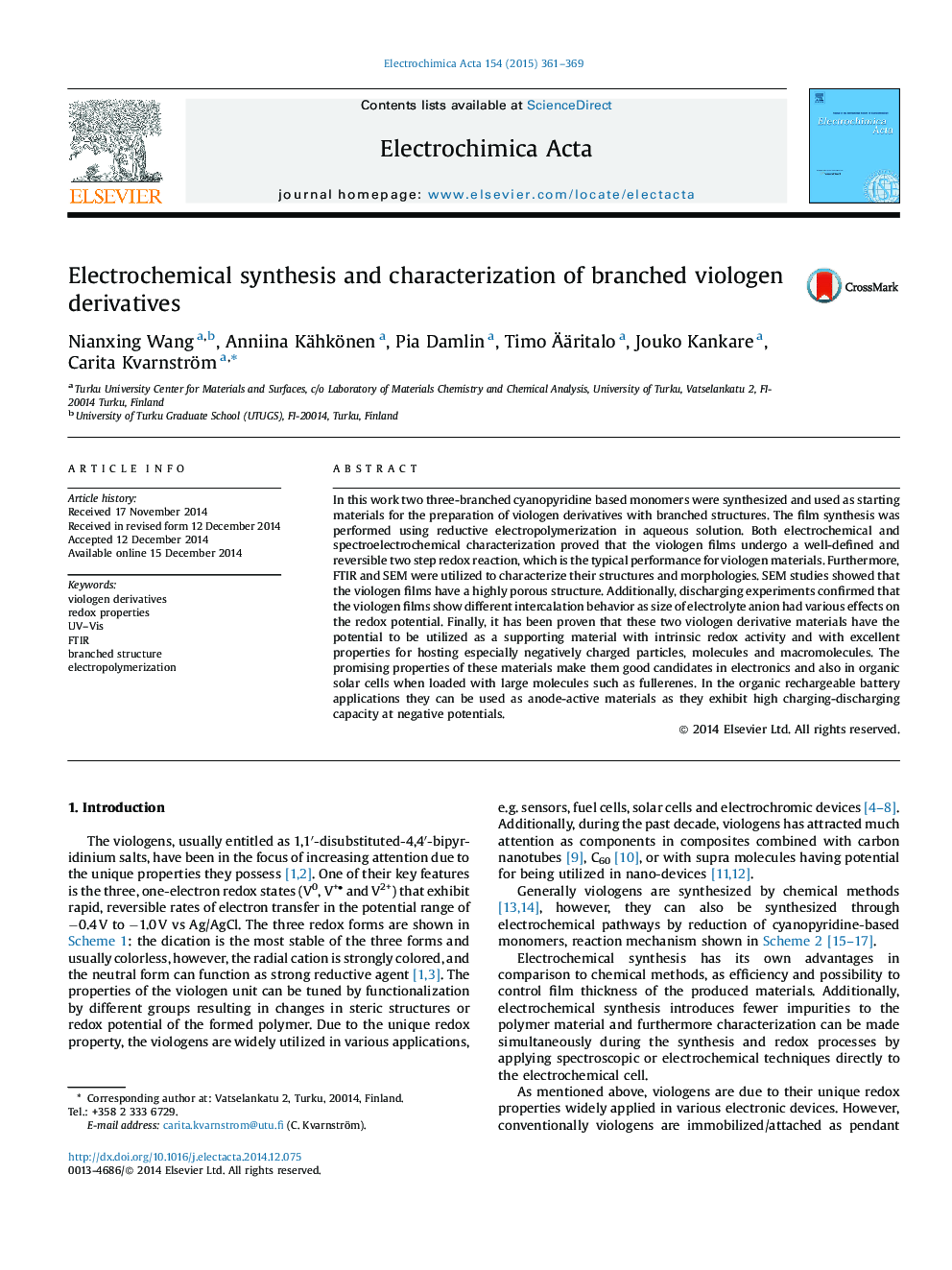| Article ID | Journal | Published Year | Pages | File Type |
|---|---|---|---|---|
| 184704 | Electrochimica Acta | 2015 | 9 Pages |
In this work two three-branched cyanopyridine based monomers were synthesized and used as starting materials for the preparation of viologen derivatives with branched structures. The film synthesis was performed using reductive electropolymerization in aqueous solution. Both electrochemical and spectroelectrochemical characterization proved that the viologen films undergo a well-defined and reversible two step redox reaction, which is the typical performance for viologen materials. Furthermore, FTIR and SEM were utilized to characterize their structures and morphologies. SEM studies showed that the viologen films have a highly porous structure. Additionally, discharging experiments confirmed that the viologen films show different intercalation behavior as size of electrolyte anion had various effects on the redox potential. Finally, it has been proven that these two viologen derivative materials have the potential to be utilized as a supporting material with intrinsic redox activity and with excellent properties for hosting especially negatively charged particles, molecules and macromolecules. The promising properties of these materials make them good candidates in electronics and also in organic solar cells when loaded with large molecules such as fullerenes. In the organic rechargeable battery applications they can be used as anode-active materials as they exhibit high charging-discharging capacity at negative potentials.
